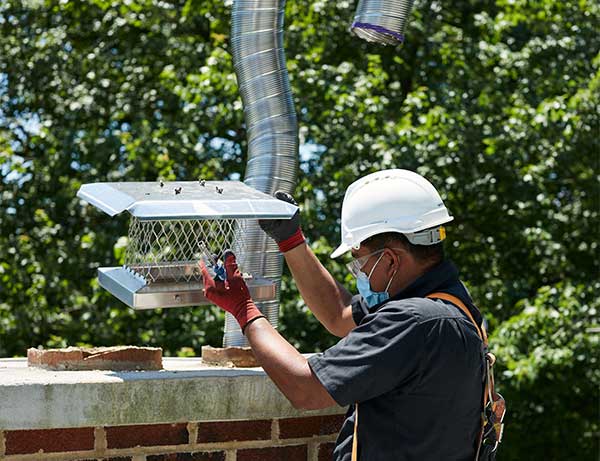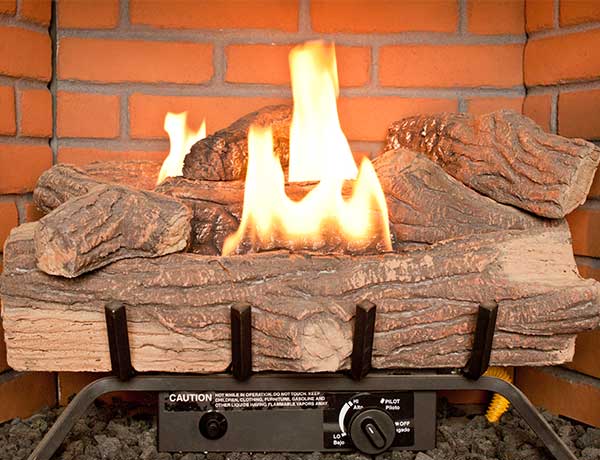10 Chimney Safety Tips
for Homeowners
If you are unsure about your chimney on any of these ten issues, give our trusted company a call!
2. Free and Clear. Make sure that the top of the chimney is free and clear of tree branches, ivy, or overhanging branches.
3. Cap it. Have a chimney cap installed on all of the flues. New chimney caps are usually constructed of stainless steel and do not rust. They keep out rain, birds, raccoons, squirrels, leaves and other debris that could obstruct the flow of flue gasses in your chimney.
4. The right fuel for the job. Well seasoned hard wood yields the most Btu’s (heat) for your fireplace or wood stove. Wood that has been split and stacked for 6 months out of the rain will be dry enough. Do not burn Christmas trees, pressure treated or painted scrap lumber in your fireplace or wood stove.
5. Liquid free light. Do not use any type of liquid fire starters (lighter fluid, charcoal grill lighter, gasoline, etc.) to start the fire. Only use fire starters specifically designed for fireplaces and wood stoves. Besides the inherent danger of out of control flames inside the home, some of these accelerants can leave residues that may ignite inside the flue (chimney fire).
6. Keep it clear. Keep all furniture and combustible furnishings at least 36 inches away from the fireplace or wood stove. Exposure to heat can lower the ignition temperature of combustible items over time, and they can catch fire.
7. Screens or doors. Have a fireplace screen or set of glass doors with a screen in front of your fireplace during operation. Flying sparks from sappy wood can burn holes in your carpet or furniture. Remember, if you have glass doors, they must be open during the operation of your fireplace, do not close them if a fire is burning. The glass is not rated for those temperatures and the fire will be starved for oxygen and may smoke up the home.
8. Smoke detectors and carbon monoxide detectors are a must. Some of the newer units will detect both smoke and carbon monoxide, but both types should be installed through out the home. Optimum placement is on the ceiling because that is where the smoke and carbon monoxide will be. Plug in units are convenient but near the floor is not ideal.
9. Treat your fire like a toddler, watch them. Tumbling logs off the grate can knock over a fireplace screen and start a house fire. Do not leave them unattended.
10. Pick the right company. Do your homework on the company you choose to inspect and sweep your fireplace/ furnace flues. What kind of certifications and training do they have? What do on line services like Angie’s List and the Consumer’s Checkbook say? Ask your friends about their favorite companies.



